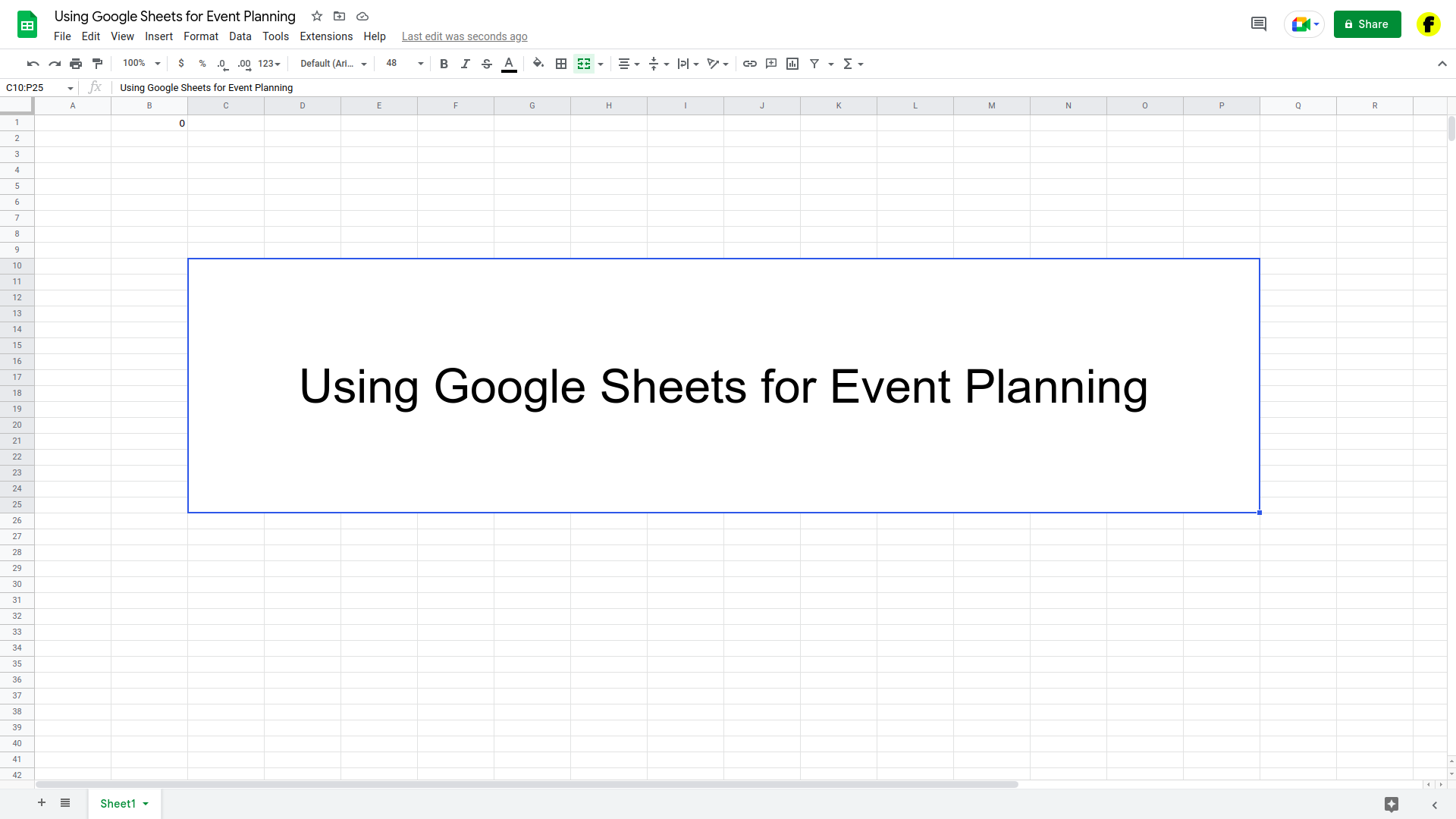Using Google Sheets for Event Planning

Event planning can be a complex and time-consuming task, but using Google Sheets can help make the process more efficient and organized. With its powerful features and easy-to-use interface, Google Sheets is a great tool for planning events of all types and sizes.
Step 1: Set up your sheet
The first step in using Google Sheets for event planning is to set up your sheet. Start by creating a new sheet, or use an existing one that you’ve already set up.
Next, decide what data you want to track. Some common pieces of information that you might want to include are:
- Event name
- Date and time
- Location
- Attendee list
- Budget
- Task list
Create a column for each piece of data that you want to track, and give each column a descriptive title.
Step 2: Enter your data
Once you’ve set up your sheet, it’s time to enter your data. In each row, add a new event and fill in the relevant information for that event.
Step 3: Use formulas to calculate your budget
Google Sheets includes a variety of formulas that you can use to calculate your event budget. For example, you might want to use a formula to calculate your total income and expenses for a given event.
To do this, create a new sheet in your event planning workbook, and give it a descriptive name (e.g. “Budget”). In the first row of the budget sheet, create columns for “Category,” “Income,” and “Expenses.”
Next, in the “Category” column, enter the names of the categories that you want to track (e.g. “Venue,” “Food,” “Entertainment”).
In the “Income” column, enter a formula to sum the income for each category. For example, if your income data is in a sheet called “Event Details,” and you want to sum the income for the “Ticket Sales” category, you might use a formula like this:
=SUMIF(Event Details!D:D, “Ticket Sales”, Event Details!E:E)
This formula will sum all of the values in the “Amount” column (E) where the corresponding value in the “Category” column (D) is “Ticket Sales.”
Repeat this process for each of the categories that you want to track.
In the “Expenses” column, use a similar formula to sum the expenses for each category. For example:
=SUMIF(Event Details!D:D, “Venue”, Event Details!E:E)
This formula will sum all of the values in the “Amount” column where the corresponding value in the “Category” column is “Venue.”
Step 4: Use filters and pivot tables to analyze your data
Once you’ve entered your data and calculated your budget, you can use filters and pivot tables to analyze your data in more detail. Filters allow you to filter your data based on specific criteria, making it easier to find specific events or categories.
Pivot tables allow you to summarize and rearrange your data in different ways, making it easier to see patterns and trends. To create a pivot table, click on the “Data” menu and select “Pivot Table.” Then, choose the data that you want to include in your pivot table, and drag and drop the fields that you want to use as rows and columns.
Step 5: Collaborate with others
One of the great things about using Google Sheets for event planning is that it’s easy to collaborate with others. You can share your sheet with other people, and they can make changes and add comments to the sheet. This can be especially useful if you’re working with a team on an event.
Conclusion
By using Google Sheets for event planning, you can stay organized and on top of your tasks, and make your event planning process more efficient. Whether you’re planning a small event or a large conference, Google Sheets is a powerful tool that can help you get the job done.





